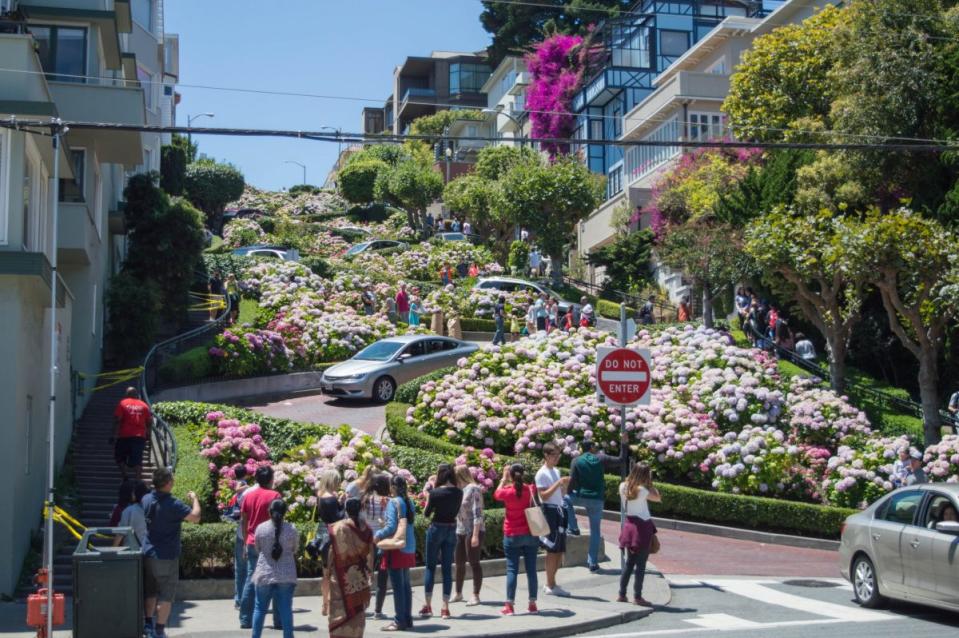San Francisco’s real estate market has reached 'peak unaffordability': housing expert
For San Francisco Bay Area residents long accustomed to skyrocketing rents and real estate prices, there’s some relief on the horizon.
According to Trulia Chief Economist Ralph McLaughlin, San Francisco Bay Area rents and real estate prices are cooling off, down from 15%-17% growth year-over-year to 5%-6% — a trend McLaughlin expects to continue for at least the next two to three years.
That’s due to an overall increase in the number of homes and apartments on the market, which keeps prices from rising. The Dallas, Texas-based housing research firm Axiometrics estimates 12,300 new rental units will glut the Bay Area cities of San Francisco, Oakland and San Jose this year, up from nearly 7,000 units in 2015 and 6,700 units in 2014.
As a result, landlords from San Francisco’s South of Market neighborhood, where Airbnb, Pinterest and Yelp (YELP) are located, all the way to Cupertino, which is home to Apple (AAPL), are doling out tantalizing incentives to land tenants, such as four to six weeks free rent, discounts to tech workers, and even free bikes.
The other reason for the Bay Area’s cooling rents and real estate prices? “Peak unaffordability,” as McLaughlin calls it.
“Your average buyer can’t afford a home,” McLaughlin explained. “As buyers pull back because of price-induced reasons, there is less competition for homes, and so price growth moderates.”
While single-digit growth in any other part of the US would still be viewed as a significant uptick, it’s actually a significant downward trend in the San Francisco Bay Area. The Bay Area remains the “least affordable area” in the US to live, with median home prices in San Francisco proper fetching $1.15 million and median rents hovering around $4,500 a month for all apartments, according to Trulia, which is owned by online real-estate database company Zillow (Z).
“If you look over the last 30 years at the largest markets in the US and you look at prices, the two markets that have seen the biggest increases over the last 30 years have been San Francisco and San Jose,” McLaughlin told Yahoo Finance. “If you were a homeowner, and if you bought the median home in San Francisco in 1986, and you just finished paying off your mortgage, you would have gained about $900,000 in value. Similarly in San Jose, you would have gained $750,000 in value.”
That property growth sounds like even more when compared to what McLaughlin calls “run of the mill” markets, such as Fort Worth, Texas; Dayton, Ohio; or St. Louis, Mo., or even places like Chicago, Ill.
“If you bought a home in any one of those places in 1986, and you just paid it off, you’d only have gained about $50,000 or $55,000,” he added.
In addition to San Francisco, McLaughlin is also seeing, to a lesser degree, cooling rents and home prices in markets including New York, Los Angeles, and Denver.
Still, San Francisco remains rather unique in its exorbitant pricing, largely driven by the latest tech boom and an influx of tech workers that easily command six-figure salaries.
“You wouldn’t be incorrect to say the [San Francisco Bay] area is ‘weird,’” he added. “San Francisco alone has gained more for buying a median-priced home than the 10 slowest-growing markets in the last 30 years combined. Thirty years ago, it was slightly more expensive than the rest of the country. Now it’s a lot more expensive. So we’ve really seen the Bay Area move and become further outliers than they were just a few years ago.”
JP Mangalindan is a senior correspondent for Yahoo Finance covering the intersection of tech and business. Follow him on Twitter or Facebook.
More from JP Mangalindan:
Facebook exec hints at ‘next logical step’ for Messenger
Box CEO: ‘Investors have two very different perspectives on our business’
Apple isn’t the only giant US company being scrutinized for its overseas taxes
‘You’re not the shooter, are you?!” — My night at LAX
Leaks about the iPhone 7 have one analyst skeptical about Apple sales

